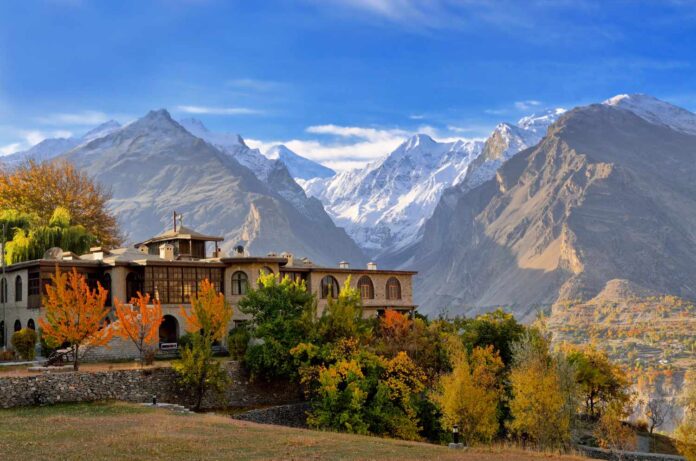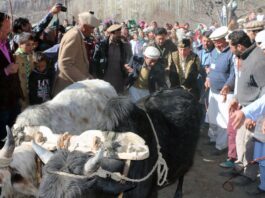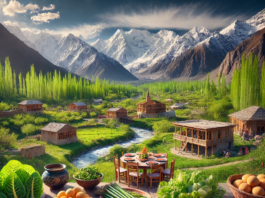Nestled in the majestic Himalayan region of Pakistan, Hunza Valley is a captivating destination that offers breathtaking views, a rich cultural heritage, and an unparalleled experience in all four seasons. Each season in Hunza possesses its own unique charm, attracting tourists from around the globe. From vibrant blossoms in spring to snow-capped peaks in winter, this heavenly abode never fails to mesmerize visitors. Let us delve into the beauty and benefits of Hunza’s weather in each season, making it a haven for tourism enthusiasts.
Spring: A Tapestry of Blooms
As winter bids farewell, Hunza Valley awakens with a burst of color during spring. Blossoming apricot, cherry, and apple trees adorn the landscape, painting it in vibrant hues. The valley is transformed into a paradise with fragrant orchards and terraced fields, making it an ideal time for nature lovers and photographers. The moderate temperature allows for comfortable exploration of ancient forts, such as Baltit and Altit, and the iconic Attabad Lake, offering boat rides amidst breathtaking scenery.
Summer: Escape to Cool Serenity
With temperatures ranging between 20 to 30 degrees Celsius, Hunza Valley provides a much-needed respite from scorching summers in other parts of the country. Visitors can indulge in a myriad of activities such as hiking, trekking, and camping in the lush green meadows of the valley. The famous Rakaposhi Peak, standing tall at 7,788 meters, provides a mesmerizing backdrop for trekkers. Moreover, the summer festivals showcasing traditional music, dance, and local cuisine add a cultural touch to the experience, making it an irresistible season for tourists.
Autumn: A Canvas of Golden Splendor
Autumn in Hunza is a spectacle to behold as the valley transforms into a vivid canvas of golden hues. The trees and vineyards dazzle with shades of red, orange, and yellow, creating a breathtaking panorama. The crisp mountain air and mild temperatures make it an ideal time for hiking enthusiasts and photography aficionados. A visit to the iconic Baltit Fort during this season offers a remarkable blend of history and nature’s artistry, providing a truly immersive experience.
Winter: A Snowy Wonderland
When winter embraces Hunza Valley, it turns into a fairytale wonderland. Snow blankets the towering peaks, and the landscape is transformed into a pristine white paradise. The temperatures range from -10 to 10 degrees Celsius, making it perfect for winter sports like skiing, snowboarding, and ice climbing. The frozen beauty of Attabad Lake adds another dimension to the winter charm, inviting adventure seekers to enjoy the serene surroundings. The famous Eagle’s Nest viewpoint offers a breathtaking panoramic view of the snow-covered valley, leaving visitors in awe of nature’s grandeur.
The Benefits for Tourism
Hunza’s remarkable weather throughout the year contributes significantly to its popularity as a tourist destination. The diverse seasons provide ample opportunities for various outdoor activities, making it an ideal spot for adventure enthusiasts, nature lovers, and photographers. The valley’s moderate climate, coupled with its awe-inspiring scenery, ensures a comfortable and captivating experience for visitors.
Furthermore, the region’s rich cultural heritage and warm hospitality of the locals enhance the overall tourism experience. Traditional festivals and events celebrated in each season provide a glimpse into the unique customs and traditions of the Hunza people, adding an authentic touch to tourists’ visits.
The economic benefits of tourism in Hunza Valley are substantial. The influx of visitors stimulates the local economy, creating employment opportunities and promoting entrepreneurship. The revenue generated through tourism helps in the preservation and restoration of historical sites, fortresses, and cultural landmarks, ensuring their long-term sustainability




